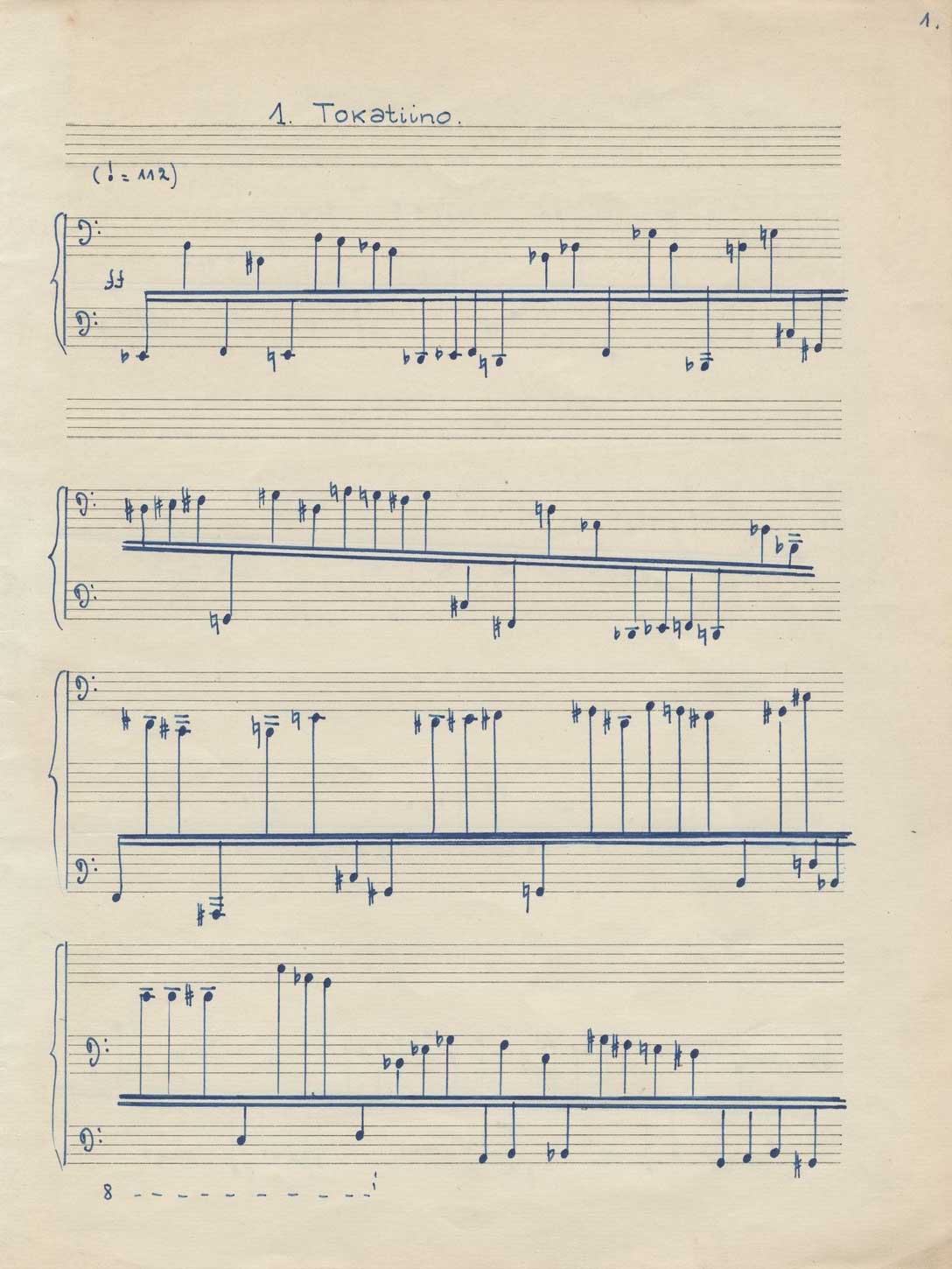Composed in 1958, during his first year at the conservatoire, the partita, along with two sonatinas, belongs among the earliest concert works in Arvo Pärt’s list of compositsions. With these piano pieces, the young composer was introduced to the wider audience thanks to Professor Bruno Lukk, an acclaimed pianist who valued Pärt’s works highly enough to include them in his repertoire. All three early piano compositions are also dedicated to him.
The radio premiere of Lukk’s recording of the partita was heard on Estonian Radio on 5 October 1958. The first concert performance took place a month later at the Tallinn Conservatoire student concert at Estonia Concert Hall, performed by the 3rd-year student, Mare Kalm.
Just like the sonatinas, the partita is composed in neoc…
Composed in 1958, during his first year at the conservatoire, the partita, along with two sonatinas, belongs among the earliest concert works in Arvo Pärt’s list of compositsions. With these piano pieces, the young composer was introduced to the wider audience thanks to Professor Bruno Lukk, an acclaimed pianist who valued Pärt’s works highly enough to include them in his repertoire. All three early piano compositions are also dedicated to him.
The radio premiere of Lukk’s recording of the partita was heard on Estonian Radio on 5 October 1958. The first concert performance took place a month later at the Tallinn Conservatoire student concert at Estonia Concert Hall, performed by the 3rd-year student, Mare Kalm.
Just like the sonatinas, the partita is composed in neoclassical style, which became an important trend among the young composers (including Tamberg, Tormis, Sink and Rääts), emerging in Estonia during the late 1950s. The titles of the four movements, and also their musical traits make a reference to earlier musical forms, but the music itself is atonal. Through similar musical material and rhythm patterns, the different movements of the composition form a single whole.
In the first movement, Toccatina (Italian for ‘a short, simple toccata’), the quick motoric movement creates an impression of a restless, impetuous toccata, where the fingers hardly manage to touch the keys (toccare – ‘ to touch’ in Italian). The structure of the second movement, Fughetta, follows the principles of a fuga, where the theme is presented alternately in the upper and lower voice starting on different notes. The theme is also alterd by inversion, decomposed into fragments and then reassembled. The slow sarabande rhythm of the third movement, Larghetto, features the tension of the first movements. As a refreshing contrast, G major chords suddenly appear in the final bars instead of atonality. The last movement, Ostinato, is based on a repetitive bass movement of four quarter notes. It is the culmination of the entire work, combining elements from all previous movements.
